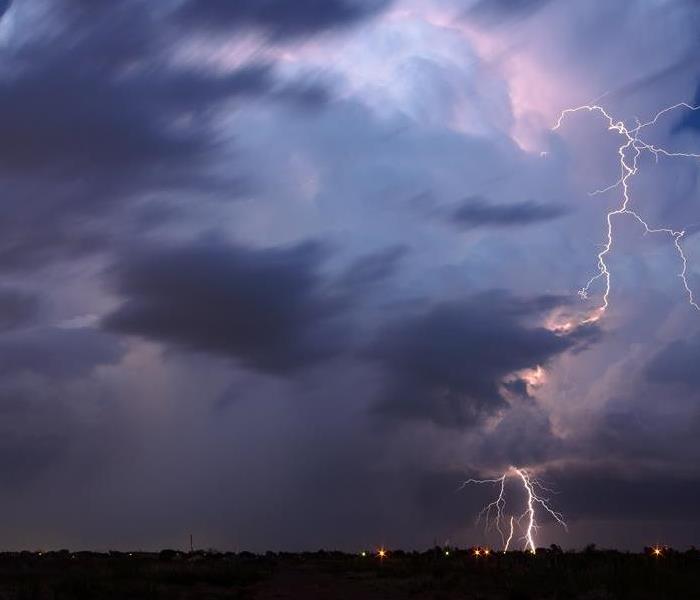Cracks in the Foundation: How Storm Damage Can Impact Your Home's Structural Stability
9/28/2023 (Permalink)
Storms can bring significant damage to various parts of your home, including the foundation. While the focus is often on visible damage such as roof leaks and fallen trees, it's crucial to recognize the potential impact on your home's foundation. Understanding how storm damage can affect your foundation is essential for early detection and necessary repairs. In this blog post, we will explore the risks associated with storm damage and its effects on your home's foundation.
Soil Saturation
Heavy rainfall during storms can saturate the soil surrounding your foundation. When the soil becomes overly saturated, it expands and exerts pressure on the foundation walls. This pressure, known as hydrostatic pressure, can lead to cracks, bowing, or leaning walls. It's important to address any signs of foundation movement promptly to prevent further structural damage to your home.
Intense storms can cause erosion and soil shifting around your foundation. As rainwater rushes and flows, it can wash away soil from around the foundation, creating voids or gaps. These empty spaces weaken the foundation's support, potentially leading to settlement and uneven settling of your home. The shifting soil can also cause foundation cracks and compromises its stability.
Foundation Heaving
In regions where freezing temperatures occur during storms, foundation heaving can become a concern. When moisture in the soil freezes and expands, it exerts upward pressure on the foundation. This pressure can cause the foundation to rise or heave unevenly, leading to cracks and structural instability.
Storms can result in water infiltration into your home through foundation cracks, basement windows, or compromised waterproofing systems. If left unchecked, this water intrusion can cause extensive damage, including moisture-related issues such as mold growth, rot, and deterioration of building materials. Regularly inspecting your foundation for cracks and addressing any waterproofing concerns can help protect your home from water damage.
Compromised Drainage Systems
Storms can overwhelm your home's exterior drainage systems, such as gutters, downspouts, and perimeter drains. Improper drainage or clogged systems can lead to water pooling near the foundation. The prolonged presence of water can weaken the soil and contribute to foundation problems over time. Maintaining and ensuring the proper functioning of your drainage systems is essential to mitigate potential risks.
Tree Damage
Trees near your home can present a significant risk during storms. Strong winds can cause trees or large branches to fall onto your home, damaging the foundation and other structural components. Tree roots can also extend beneath your foundation, potentially causing damage and destabilizing the structure. Regular tree maintenance, including trimming and removal of hazardous trees, can help reduce the risk of foundation damage.
Understanding the potential impact of storm damage on your home's foundation is crucial for protecting your property's structural integrity. From soil saturation and erosion to foundation heaving and water infiltration, storms can pose various risks. Regular inspections, prompt repairs, and proactive maintenance are key to identifying and addressing foundation issues early on. By taking the necessary precautions and seeking professional assistance when needed, you can protect your home's foundation and ensure its long-term stability.






 24/7 Emergency Service
24/7 Emergency Service
